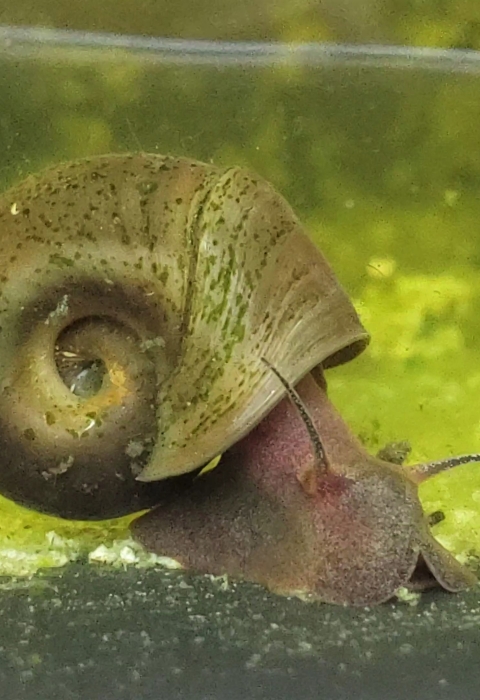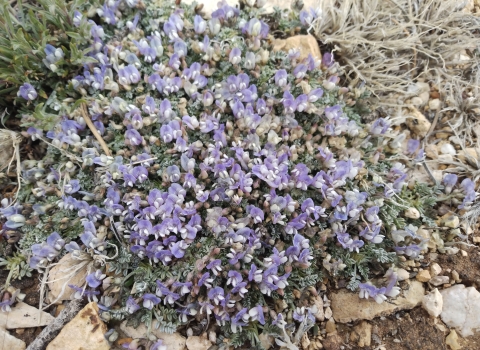Following a review of the best available science, the U.S. Fish and Wildlife Service (Service) is proposing to list the magnificent ramshorn snail as an endangered species under the Endangered Species Act (ESA). The magnificent ramshorn is an air-breathing snail, historically documented from only four sites in the lower Cape Fear River Basin in southeastern North Carolina. Experts surveyed over 100 potential sites (including most historical locations) over the last few decades and have not found any magnificent ramshorn snails. The species is currently believed to be extirpated in the wild. Efforts are currently underway to maintain the species alive in captivity and to propagate it for future releases into the wild.
“The science that the Service has gathered on the magnificent ramshorn indicates it is in danger of extinction throughout all of its range,” said Regional Director Leopoldo Miranda-Castro. “This narrow endemic needs our help. Working with state fish and wildlife agencies and our partners will help advance conservation efforts and the eventual recovery of the species.”
The Service is also proposing to designate 739 acres of ponds as critical habitat for the magnificent ramshorn in Brunswick County, North Carolina, where the magnificent ramshorn snails could be released to repopulate their historical habitat. The Service has determined that proposing critical habitat for the magnificent ramshorn is needed because there are no occupied areas to ensure the conservation of the species. Two ponds are within the boundaries of the proposed critical habitat designation - Orton Pond and Big Pond (also known as Pleasant Oaks Pond). They contain suitable habitat for the snail and are essential for its conservation, considering the life history and conservation needs of the species.
We also announce the availability of a draft economic analysis of the proposed designation of critical habitat. The total incremental costs of critical habitat designation are estimated to be less than $21,000, annually.
Only three captive populations exist, with about 1,000 snails in existence. Although captive populations have been maintained since 1992, a catastrophic event, such as a severe storm, disease, or predator infestation, affecting the captive populations could result in the near extinction of the species.
The NC Division of Water Resources and the Service are working with the city of Wilmington, North Carolina, to improve the water quality of Greenfield Lake, which formerly supported the species.
In 2018, Service staff performed an analysis to determine the suitability of potential habitats within the former range to support introduction of magnificent ramshorn snails. The Service drafted experimental protocols detailing necessary steps for possible introduction of the snail into the wild. Further, the Service is interested in working with private landowners to contribute to the conservation of the species.
In 2019 and 2020, Service staff met with Department of Defense (DoD) and the NC Plant Conservation Program (PCP), both landowners manage several ponds within the historical range of the magnificent ramshorn. The DoD’s Military Ocean Terminal Sunny Point is adjacent to the private property last known to have the ramshorn snail in the wild. The PCP owns ponds in the same watershed. Both organizations are amenable to having water quality analyses to determine whether their ponds could be suitable for snail introduction. Habitat assessment began in 2021 under the lead of the North Carolina Wildlife Resources Commission.
A 2019 legal settlement between NCDOT and plaintiffs for the Complete 540 transportation project includes $250,000 for magnificent ramshorn propagation. The road project is not expected to impact the magnificent ramshorn, but funds were appropriated for the species pursuant to the agreement. This funding supports propagation while the Service and other partners work on site assessments and landowner support for reintroduction.
For more information about the magnificent ramshorn, please visit our Frequently Asked Questions.
To comment on the proposed rule, go to the Federal eRulemaking Portal: https://www.regulations.gov/. In the Search box, enter Docket No. FWS–R4–ES–2022–0070. Comments on the proposed rule must be received by 11:59 p.m. Eastern Time on October 17, 2022. We must receive requests for public hearings, in writing, at the address shown in FOR FURTHER INFORMATION CONTACT by October 3, 2022.



